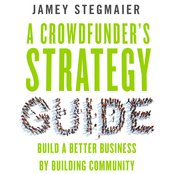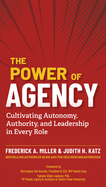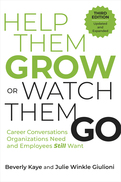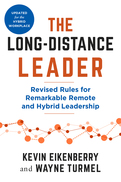PREFACE
This book was supposed to be a young adult dystopian novel set in the year 2094.
In March 2012, I was six months into the design and development of Viticulture, the game that would later become the cornerstone of my company, Stonemaier Games. I was burning out. The game was in a pretty good place, but it wasn’t ready for Kickstarter, and I had neglected my other creative passion, writing, for a long time.
I had also started to understand how big a commitment it is to design and publish a game, and I was worried that once I went down that path, it would be really difficult to accomplish my lifelong goal of writing a novel.
I’d tried to write novels before. Two of them, specifically. I approached both as epic projects that would take years to complete. I got about halfway through both before I gave up. Other things took priority.
However, I have writer friends who write multiple novels a year. Writer friends with kids. And jobs. And other passions.
So in March 2012, I gave myself two months to write a novel from start to finish. It was my sole focus during that time, other than my day job, eating, and sleeping.
The strategy actually worked! Two months after I started, I put the finishing touches on Wrinkle, a novel in which overpopulation results in a significant number of people electively traveling to the future.
As you can see by this book’s cover, you’re not reading Wrinkle. But this book wouldn’t exist without Wrinkle for several reasons: First, completing a novel after thirty-one years of not completing a novel felt like a full-body cleanse. (That’s an assumption—I’ve never tried a full-body cleanse, unless you count Taco Bell.) I felt unburdened by that long-overdue personal goal, and I was free to go allin on my Kickstarter campaign for Viticulture. Without a successful campaign for Viticulture, it’s likely that none of this—the games, the company, the blog, this book—would exist.
Second, completing Wrinkle helped me realize that I was the only person or entity holding myself back from the joy of creating something new. That is the difference between an imaginative person and a creative person—a creative person actually creates things. Crossing that threshold prepared me for the creative process that goes hand in hand with being a crowdfunder.
Third, after writing and revising Wrinkle in the summer of 2012, the novel came up in conversation with a literary agent I knew through some contacts in the publishing world. Jennifer Chen Tran read the manuscript, gave me some good feedback, and encouraged me to keep working on it.
I stayed in touch with Jennifer over the next year, during which time I ran two successful Kickstarter campaigns and built a strong audience on my blog about crowdfunding.1 One day, she e-mailed me and asked, “Have you ever thought about writing a book about crowdfunding?”
I had entertained the idea but hadn’t seriously considered it. In terms of total content, I had already written a book—all of my blog entries up to that point could fill a large tome.
Jennifer pointed out that the blog is pretty technical—it is mostly a step-by-step guide on how to create a successful crowdfunding project. It doesn’t read as a cohesive whole. It doesn’t tell a story.
More important, she added, my blog reaches only those who happen to stumble on it. It’s a limited audience, mostly tabletop game creators. “Think of the other people you could help by telling your story—and the stories of innovative crowdfunders—in a book,” Jennifer said. (I’m paraphrasing here—in reality, about twenty e-mail messages were needed before I fully grasped the concept.)
She was right. The whole goal of the blog was to help other creators, and I was reaching only a very small subset at that point. So I started writing this book for all types of entrepreneurs who are intrigued by the idea of crowdfunding, particularly those who are open to the idea that creating something is less about them—the creators—and more about others—the backers, customers, fans, and supporters who share a passion for the thing the creators are trying to make.
If you like this book, you can thank Jennifer Chen Tran and my readers for inspiring and encouraging me to create something for you. If you don’t like it, you can blame its existence on the popularity of the YA dystopian genre.
INTRODUCTION
I’ve run seven successful Kickstarter projects that together have raised more than a million dollars, and I’ve consulted on and backed countless others. The success of those campaigns has allowed me to run my board game publishing company, Stonemaier Games, full-time.
Throughout this book I refer to Stonemaier Games in terms of “we” and “our,” since I’m not alone in this endeavor. I have a business partner (Alan Stone), an advisory board, hundreds of “ambassadors,” and thousands of backers (crowdfunding customers).
I designed three of our games—Viticulture, Euphoria, and Tuscany—as well as a game accessory, the Treasure Chest, all four of which have a total of nearly fifty thousand copies in print. To put it in perspective, that’s really good for a small publishing company that has been around for about two years and really bad for, say, Hasbro.
I write a crowdfunding blog where I share my insights, mistakes, research, and observations to provide a detailed template for how other crowdfunders might, I hope, achieve success. When I refer to “the blog” in this book, I’m talking about the Kickstarter Lessons website, not my personal blog.1 That blog is mostly about my cats.
The crowdfunding blog serves as a complement to this book, but the two are very different. The blog is a step-by-step guide to creating a crowdfunding project and running a campaign. I’ve been told that it contains an almost overwhelming amount of information. So for the readers of this book, I’ve condensed those 125 lessons down to 125 sentences (well, I tried to limit myself to one sentence per lesson), found in the Resources section of this book. They’re not a replacement for the full entries, nor do they explain the logic behind the lessons, but if you trust me by the time you reach the end of this book, they’re there for you to consider.
A Crowdfunder’s Strategy Guide is much more anecdotal than my blog. Whenever I read a book like this, I find myself skipping over the pedantic parts to get to the concrete, real-life examples. So I’ve tried to fill the book with stories, not lessons.
Several projects I feature in this book fall into the category of “megaprojects.” These are projects that wildly overfunded. You can learn a lot from these projects, but it’s important to remember that correlation does not equal causation, especially when comparing your project with these. Just because megaproject A launched on, say, July 8 and raised $10 million does not mean that if you also launch your project on July 8, you will raise $10 million, too.
When you research megaprojects, dig under the surface a bit before drawing any conclusions. Read the project updates, poke around for a postmortem or lessons-learned post, look into past or future projects to see how their creators’ methods changed over time, and so on. Megaprojects are often successful despite their flaws and deviations from best practices, and it’s up to you to distinguish how they deviated and the resulting impact.
The one common thread between the blog and this book is my belief that you will significantly increase your odds of crowdfunding success if you focus on building community, empathizing with supporters, and developing trust-based relationships. Whenever you’re faced with a decision—big or small—simply ask yourself, “What’s the right thing for my backers?”
I will systematically prove to you in every chapter of this book that by putting your backers first and connecting with individual backers, you will be a better, happier, more successful creator.
Even though the stories and lessons in this book will increase your odds of crowdfunding success, nothing is guaranteed. This is actually the great thing about crowdfunding: the crowd will vote with their dollars to tell you whether there is demand for whatever it is you’re trying to create. If you put in the legwork and present your idea well, but it still doesn’t successfully fund, that’s a sign that the world isn’t interested. And that’s okay. It’s a lot better to determine what the demand is before you invest thousands of dollars to make something.
Last, it’s important to note that a lot of the examples in this book are tabletop game projects. I run tabletop game projects and own a board game company, so it makes sense that I pay more attention to that category and hobnob with other tabletop game creators more than others. However, the vast majority of the examples I use can apply to any category, and I’ve made sure to include plenty of stories from other categories, not just to reach various types of creators, but also because these stories fascinate me. I’ve learned just as much from campaigns unrelated to games as I have from those that are.
Now, my friends, it’s time to make this book all about you.









